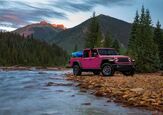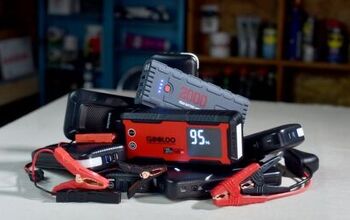Bridgestone Blizzak WS90 Winter Tire Review: The Yank Tank Thrives

This is the ultimate test for a set of winter tires: living with a 2007 Mercury Grand Marquis through a Northeast winter.
Bridgestone sent me a set of Blizzak WS90s to fit on my Mercury, and I put them through everything from fresh powder in blizzard conditions, densely packed snow, deep slush, rain, and whatever else the winter could throw at them.
First Impressions: Confidence from the Start
Right away, the WS90s felt reassuring. There’s a noticeable difference compared to other winter tires or all-seasons I’ve run in the past—less wheel slip when starting from a stop and much better stability when braking. I could tell immediately that these tires were built for extreme winter conditions—exactly what my V8-powered rear-wheel-drive sedan needed.
Rolling out of the shop, the softer compound is apparent, but not in a bad way. There’s a definite increase in road noise—as expected from dedicated winter tires—especially on the highway. We spend most of our time in town, and we just cranked up the music a bit for the out-of-town holiday runs.
Stock size for my car is 225/60 R16, but I upsized to 235/60/R16. Conventional wisdom says you should use a thinner tire for winter driving to cut through the snow, but I wanted the wider contact patch platform because my car mostly tools around downtown Toronto, where ice and wet roads are more common than deep snow.
The 60 aspect ratio on a 235-section tire also means the sidewall is slightly taller, which has the effect of slowing down wheel spin and acting as a pseudo snow-mode. The WS90 is available in more than 50 sizes for wheel diameters between 15 and 19 inches, meaning you should be able to find the right size, however you want to do it.
In warmer temperatures, the tires don’t feel overly squirmy or unpredictable, though they do obviously lack precision compared to the General Tire AS-07s my car summers on, but some of that is due to the WS90's taller sidewall. As the temps approach 50°F, you can definitely feel how soft and sluggish they feel, although that’s not really a complaint.
Snow Performance: Where the WS90s shine
In deep snow, these tires are actually incredible. Even on unplowed roads, the WS90s dug in and allowed my V8 to use its low-end torque without drama— the taller sidewalls, helping to mitigate the wheelspin, were certainly a plus, although the old second gear trick with TC off was required a few times, especially when the going got really tough.
Acceleration was smooth and controlled, and I never really felt like I had to fight for traction—disclaimer, I tossed a 20-lb kettlebell in the spare tire hold to help with traction.
Braking, one of the biggest challenges in winter driving, was equally impressive. Stopping distances were significantly shorter than what I’ve typically experienced with this car wearing other tires, including all-season rubber. Even when simulating an emergency stop in heavier snow, there is only mild ABS intervention towards the end of the pedal travel, and even through that, the tire doesn’t just become a passenger—you can still feel the Blizzaks fighting to shed speed. I consider myself skilled at winter driving, so your mileage may vary.
The WS90s have an increased number of ‘teeth’ on the tread shoulders to help with lateral grip when moving through snow. Hard-packed snow and ice are where the WS90’s tread pattern and compound really do their work. On icy intersection launches and frosty, yet not quite frozen highways, the car felt secure and planted. My Grand Marquis still wants to wag its tail every now and then—there’s no getting rid of RWD driving dynamics—but yaw events were fairly controlled and predictable, and I never felt like the tires stopped communicating where the car was in time and space, a benefit of big body, long wheelbase sedans.
The WS90s also leave a distinct tread pattern wherever they go, making it pretty clear a Blizzak has been here.
Wet and Dry Roads: A Trade-Off for Winter Grip
While the WS90s perform well on wet pavement, they aren’t invincible. Hard acceleration can induce some slip, but hydroplaning resistance in rainy or slushy conditions is fairly solid. The compound's hydrophilic properties help the rubber siphon the thin layer of water that sits on top of ice into the WS90's water evacuation channels. Great for those drives in the dark where you're not quite sure if the road is just damp or actually frozen across the surface.
Dry road performance is probably the weakest point, but that’s expected. Some of the handling drop off I experienced is likely due to the taller sidewall and lower tire pressures I typically run in the winter, which introduces more sidewall deflection and suspension softness, which is not necessarily due to the tire itself.
Durability and Value: A Worthy Investment?
One of the biggest concerns with winter tires is longevity. The WS90s have a slightly harder compound than their predecessors, which should extend their lifespan. Bridgestone gave the WS90 an updated silica-enhanced rubber compound that pairs with the tire’s stiffer tread blocks and three-dimensional sipe design to increase the tire’s longevity. The company claims the improvements should help you get an extra season out of the tire.
However, like all winter tires, they’ll wear quickly if used outside of cold conditions. The best approach is to swap them out when temperatures rise above 45°F (7°C) to get the most out of them. I don’t have an accurate reading of how these tires wear, as they only spent a few months on my car and covered a couple of thousand miles at most.
I did actually lose one tire the week I was about to take them off—an ejected bearing cage from someone’s shattered half-shaft found its way through the heart of my right front tire as I was creeping through a neighborhood looking for an address. That’s not really a durability problem, though, in a battle of sharp metal vs tire, metal always wins.
Considering their performance, the WS90s are worth the investment for anyone living in a region with serious winter weather. They may not be the cheapest option, but when it comes to keeping control on icy roads and packed snow with your family in the car, they’re worth every dollar.
Bridgestone Blizzak WS90 Winter Tires
The Blizzak WS90 Is One of the Best Winter Tires on the Market
The Bridgestone Blizzak WS90 is a tire that does exactly what it promises. It delivers outstanding winter traction, giving drivers the confidence they need in snow and ice. The Blizzaks aren’t the best-performing tire in any one category; instead, they perform at a high level across all performance metrics to make it one of the best, if not the best, all-around winter tire on the market.
Become an AutoGuide insider. Get the latest from the automotive world first by subscribing to our newsletter here.

An experienced automotive storyteller and accomplished photographer known for engaging and insightful content. Michael also brings a wealth of technical knowledge—he was part of the Ford GT program at Multimatic, oversaw a fleet of Audi TCR race cars, ziptied Lamborghini Super Trofeo cars back together, been over the wall during the Rolex 24, and worked in the intense world of IndyCar.
More by Michael Accardi







































Comments
Join the conversation
People on the Miata Forum (Miatas are RWD so winter tires are a must if you are depending on the car) Tend to bring up other brands and don't like Blizzaks due to the dry handling. Michelin XIce tend to be favored.